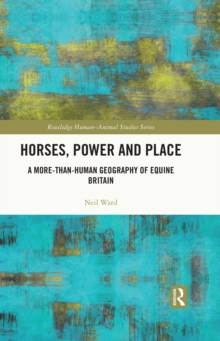
Horses, Power and Place : A More-Than-Human Geography of Equine Britain PDF
by Neil Ward
Part of the Routledge Human-Animal Studies Series series
Description
Horses, Power and Place explores the evolution of humanity's relationship with horses, from early domestication through to the use of the horse as a draught animal, an agricultural, industrial and military asset, and an animal of sport and leisure.
Taking an historical approach, and using Britain as a case study, this is the first book-length exploration of the horse in the more-than-human geography of a nation. It traces the role and implications of horse-based mobility for the evolution of settlement structure, urban morphology and the rural landscape. It maps the growth and various uses of horses to the point of 'peak horse' in the early twentieth century before considering the contemporary place of the horse in twenty-first century economy and society. It assesses the role of the horse in the formation of places within Britain and in the formation of the nation. The book reflects on the implications of this historical and contemporary equine geography for animal geographies and animal studies. It argues for the study of animals in general in how places are made, not just by humans.
Written in a clear and accessible style, this book will be essential reading for students and scholars of animal geography and animal studies more widely.
Information
-
Download - Immediately Available
- Format:PDF
- Pages:206 pages
- Publisher:Taylor & Francis
- Publication Date:05/12/2023
- Category:
- ISBN:9781003824176
Other Formats
- EPUB from £35.99
- Hardback from £135.00
Information
-
Download - Immediately Available
- Format:PDF
- Pages:206 pages
- Publisher:Taylor & Francis
- Publication Date:05/12/2023
- Category:
- ISBN:9781003824176










